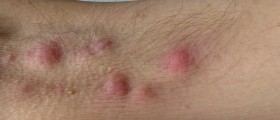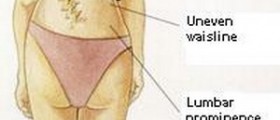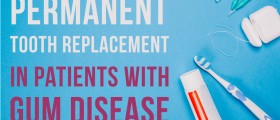
Peyronie's disease is a condition when plaques develops inside the penis. When the penis is in erection, it bends and may be painful. The symptoms of Peyronie's disease include deformed penis in erection and pain. Erected penis can be curved upward, which is the most frequent deformity, it can be bent down or curves to one side, or it can be narrowed at one spot. The symptoms can happen unexpectedly or develop slowly. Pain usually arises with the erection but in some cases the patient can feel pain only while he is having an orgasm. In rare cases of this disorder pain can be felt when penis is not in erection. Other symptoms can be problem with the erection and reduction of the penis.
The most probable cause for Peyronie's disease is an injury or wound which did not heal appropriately. There are a lot of factors which can be responsible for improper healing and Peyronie's disease itself. The disorder can be hereditary or it can be a consequence of the connective tissue disease. Older men are prone to injuries and their wounds heal slowly so they may be at risk of suffering from Peyronie's disease. Factors such as history pelvic damage, diabetes and smoking may be related to causes of Peyronie's disease. It is estimated that one percent of men have this disorder.
In order to decide on the treatment, the doctor will perform a physical exam and an ultrasound scan. If the only symptom is curved penis and the patient does not have pain or problems with erection, the doctor may not recommend any treatment. However, if the symptoms are severe, the doctor may suggest penile injection or surgery.
Injections can reduce the pain and curving of the penis. This treatment can last several months and it may include medications such as collagenase, interferon or verapamil. Surgery is performed in case the penis is severely deformed. The surgeon may shorten the unaffected side of the penis. This may affect the length of the penis but the patient will have straight penis in erection. This procedure is usually performed if the patient has adequate size of the penis and the curvature is not extremely severe. A further surgical procedure is extending the affected side. It is done with several cuts and putting implants. This is used in the patient with severe curvature and a shorter penis. Both procedures carry a risk of maintaining erection. Another method of treating Peyronie's disease can be penile implants.
















Your thoughts on this
Loading...